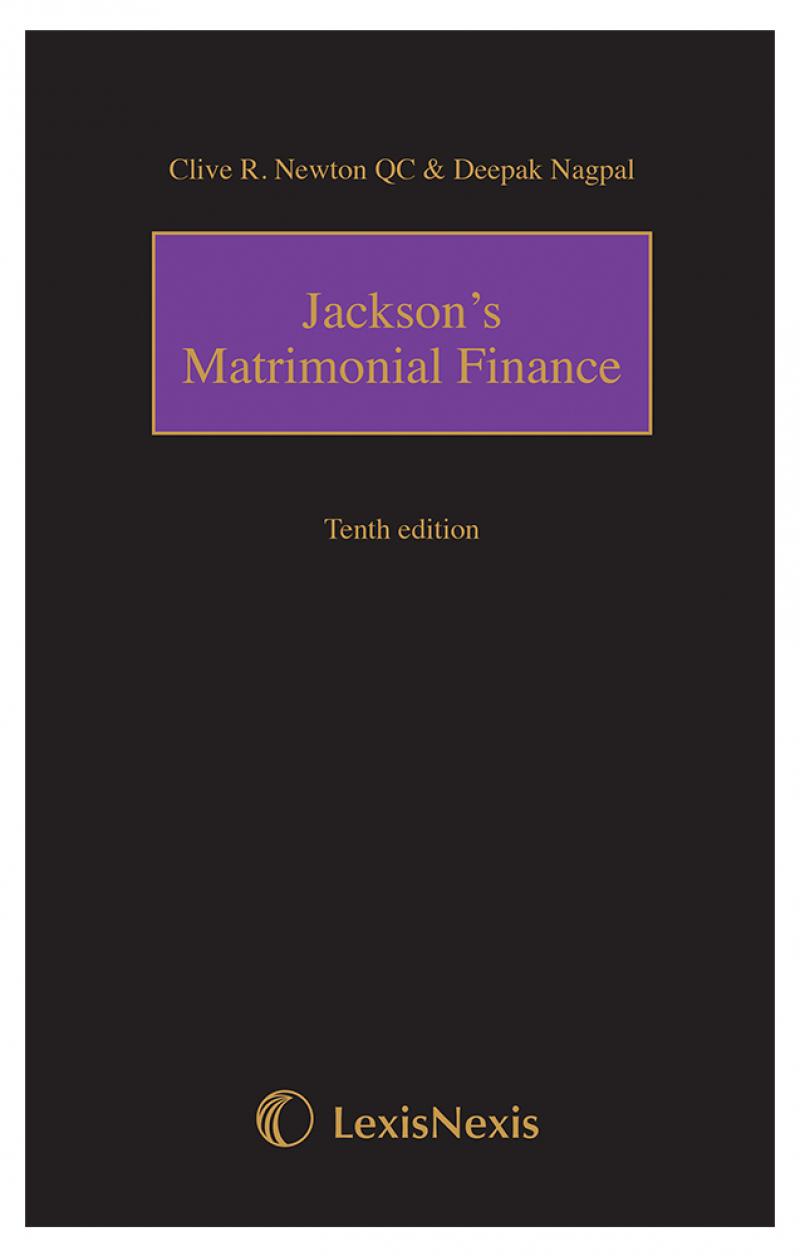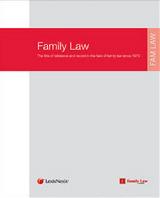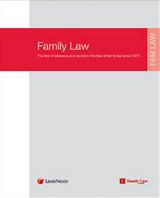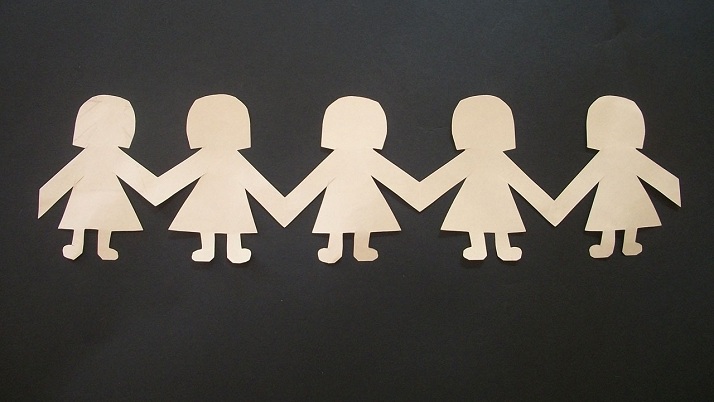- News & Comment
-
Online Shop
Online Services
Looseleafs
Law Reports
Books and eBooks
-
CPD & Events
Webinars
Events
- Authors
- About Family Law
- Contact












 30 JAN 2025
30 JAN 2025

 27 JAN 2025
27 JAN 2025

 27 JAN 2025
27 JAN 2025

 27 JAN 2025
27 JAN 2025

 27 JAN 2025
27 JAN 2025










Having spent more than 45 years in practice as a barrister mainly in family law and much of that in divorce financial remedy cases, the author has witnessed at first hand in that time the working out of the Matrimonial Causes Act 1973, which had, at the start of my Bar career, just come on to the statute book. A journey of interpretation from a ‘just settlement’, being the provision of a home and maintenance for a wife as her only entitlement no matter what wealth had been generated during the marriage to a momentary period after 2000 when, following White v White (2000) UKHL 54, married women stood shoulder to shoulder with their husbands before the judgment seat fully expectant for the first time in this jurisdiction of equality in division of their finances upon divorce.
Ever since, with historic prejudices not yet laid to rest, we have witnessed an intellectual retreat from that position on the pyre of mainly male judicial reasoning at all levels of our court system that exceptions existed to justify, in alleged fairness, a less than equal share out, in certain circumstances, upon divorce. Such reasoning including descriptions such as ‘pre-marital or post separation accrual of assets’, ‘stellar contributor’, ‘commercial risk in retaining company shares’, ‘non matrimonial assets’, (and most recently following Waggott (2018) EWCA (cv) 727) ‘amortisation of recovered capital awards’ and so one could add …etc, etc, etc. For historic, social and domestic reasons relating to the source of acquisition of the garnered resources in a marriage, the impact of these developed exceptions in non-need cases, continues to deny equality of division almost invariably to women on divorce.
In addition, during the last decade, the obsession the courts have had (Radmacher v Granatino (2010) UKSC 42 and V v V (2011) EWHC 3230) with the impact of marital agreements and the ‘choices’ made between the parties and their rights to so called ‘autonomy’ in how their finances are to be divided upon separation and divorce has only served to perpetuate this resistance to recognising the importance of the role of women in marriage and their entitlement to equal division of the wealth of the parties developed and/or nurtured during any relationship of substance together.
Even now, our higher courts still, as shown below, populated by a male majority expound guidelines (SS v SN (Spousal Maintenance) (2014) EWHC 4183) on maintenance which infer that married women have for far too long been coseted and overprotected by marriage from seeking employment during and at the end of the relationship. Hence, the essence of the guidance developed (if not expressed explicitly) suggests the correct approach upon a marriage breakup should be that those women should accept the reality that their former husbands are not their ‘meal tickets for life’ (cf Waggott) and whatever their former partners’ future comparative income projections, their own claims for continued income support post divorce should in most cases be time limited by term orders. An approach at a local court level which often pays scant attention to the parties’ respective future earning capacities as affected by their relationship together and the practical realities of where the daily burden of any remaining child care is likely to fall between the now separated parents – irrespective of the fine wording of any child arrangement order.
As a family law barrister of some experience, the author confesses to a sense of embarrassment that he has been party to this state of affairs for the entirety of his professional life. He also feels ashamed that our financial remedy law upon divorce only recognises in truth financial contributions as being capable, short of need or the now much restricted compensation factor or ‘gross and obvious’ conduct or a marital agreement, of adjusting the sharing principle between spouses on divorce in favour of the perceived higher financial producer.
Indeed, the reality is that, with rare exception, ‘gross and obvious’ conduct is a limited area now of advocacy and the Law’s post-Radmacher approach to marital agreements upon divorce has predictably encouraged the agreement’s presence alone to limit the weaker financial spouse’s divorce recovery from what it otherwise should have been – a spousal status still almost invariably occupied by the married woman.
Indeed, it is telling that since the advent of our civil divorce system in 1857, we still await a body of family court case law within financial remedy applications, which promotes the married woman’s role within the home and her care of the children of the family as itself being capable of increasing her asset and resources share above equality on divorce.
Yet the maintenance of a secure and loving family home and the appropriate balanced care and upbringing of children within it must still remain the most important contribution that the marriage union or stable relationship can make to society as a whole. And yes, the author acknowledges within this debate the fact that on divorce there are cases where the husband will also have shared the domestic and parental burden and responsibility – but put aside political correctness for a moment – because it still remains the wife and not the husband who is by far the most likely within the marriage to have interrupted their employment career to care for the children of the family and the most likely upon the breakdown of the marriage to remain the financially weaker and more dependant of the parties (see eg Chartered Insurance Institute ‘s interim report 2016 ‘Risk, exposure and resilience to risk in Britain today’).
The proposals at the committee stage for divorce financial remedy reform in the Divorce (Financial Provision) Bill (HC Bill 310) before Parliament give little immediate encouragement of any likely improvement of the married woman’s position in this regard. Their emphasis on the binding effect of any marital agreement reached between the parties and the focus upon so called ‘matrimonial property’ appear ripe for further regression in a woman’s divorce recovery. As for the potential effect of a proposed five year primary limit on spousal maintenance support subject to serious financial hardship, the jury must remain out as to whether the supporting proposals which attempt to mitigate the effect of the same in appropriate cases will do so or will simply follow ‘cap in hand’ to the current established trends without any true reappraisal of the yet unaddressed gender tensions and differences of opportunity within and arising from a marital relationship.
And yet, of course, with some incongruence, set against the above, it has to be acknowledged that women have never previously enjoyed more influence in our society as a whole than they do now.
The law is often cited as an excellent example of women’s progression in this respect. We have a soon to be retired first woman President of the Supreme Court in Brenda Hale (appointed 2004) and now two other Lady Justices of the same Court in Jill Black (2017) and Mary Arden (2018). We have, too, our first woman President of the Queen’s Bench Division in Victoria Sharpe (2019).
But even in this much lauded professional area of women’s achievement, the flip side reveals that it is still mainly through the minds and mouths of our male judges as the majority of sitting incumbents that our laws are propounded and interpreted. In short, the Court of Appeal currently has 9 women Lady Justices of Appeal of the 38 appeal Judges sitting – a female representation overall of 24%, the Chancery High Court has just one woman judge of 14 – overall therefore 7%, the QBD has 17 women High Court judges of 61– overall 27%, and the Family Division has 6 women High Court judges of 17 – overall 35%.
Those women of acclaim in the Law mentioned above can be rightfully proud of their own personal achievements and do, indeed, act as icons to younger women aspiring legal careers of their own by their very presence. But is this enough? Is it really acceptable that in a recent address (‘100 Years of Women in the Law: From Bertha Cave to Brenda Hale’ King’s College London – March 2019) by Lady Hale, she concluded with the hope: ‘I look forward to the day when we don’t even have to have this conversation and I hope and expect that it will not take the 50 years predicted by one of my fellow Justices before that day dawns.’
Would a man in her position be content to await for society by time attrition alone to eventually provide their gender with the universal emancipation they are entitled to simply as human beings. Indeed, would such women of acclaim in these positions today have gained their own success if their predecessors had been prepared to await such eventual developments over time.
Would women in this country in the nineteenth century have been able to have the custody of their young children on divorce, or to obtain a divorce at all if Lady Caroline Norton as an individual in high society had not been prepared to speak out and tirelessly campaign almost single handed for a change in the Law on custody in 1839 (Custody of Infants Act 1839) and after pleading the cause even before Queen Victoria in 1854 (‘A Letter to the Queen on Lord Chancellor Cranworth's Marriage & Divorce Bill’) to secure the first Matrimonial Causes Act in 1857 effecting major divorce reform. An achievement yet to be followed by her further campaign which brought about the Married Women’s Property Act in 1870, the forerunner to women’s eventual property independence within marriage secured just 12 years later by the Married Women’s Property Act of 1882. And yet, this woman’s pioneering achievements have little or no recognition within the education of our young women even to this day.
Would women have secured their equivalent education to men during the same century without the individual effort of individuals such as Emily Davies and Barbara Leigh Smith Bodichon or part suffrage with men by 1918 (Representation of the People Act 1918) and fully by 1928 (Representation of the People Act 1928) had individuals like Emeline Pankhurst and Millicent Fawcett and Emily Wilding Davison not rallied women to the cause and, in respect of the latter, sacrificed her life in 1913 beneath the hooves of the King’s Derby horse.
Would these same women have accepted it was enough only to be part of the Establishment themselves as opposed to challenging the Law at its root and branch level over these prevailing injustices to women. Indeed, would these acclaimed women in the Law today have yet gained their positions at all, had they not been able to stand on the shoulders of these giants of their gender.
Why then should women have to continue not only in parts of the world where their inequalities are endemic within their societies, but within this our assumed liberated and progressive society to put up with any area of gender inequality in the Law or any other aspect of their life and relationships with men.
Does not the unfairness we see in our society and elsewhere have a tap root in the lack of respect and fairness we give to each other as human beings and at its heart which exists between men and women in their personal relationships. Without it being dealt with, do we not pass the same pattern of behaviour and relationship by way of example on to our children and so it is perpetuated.
Women throughout the world still from East to West continue to struggle in every society to have a truly equal voice with men. This imbalance affects all of our futures. Would the issues of climate change or world peace or global economics or third world poverty to name but a few be handled as now if women’s views and sensitivities were equally considered with those of their male counterparts.
This is at the heart of the reason why it is not good enough simply to say we can only hope over time it will continue to improve, whether it be in the Law or elsewhere. Instead, it must change and without delay and those women who have achieved powerful positions in the Law have a particular duty as articulate individuals to be far more radical in their response and challenging to the forces which continue to resist women’s rights to equality.





Leave a commentOrder by
Newest on top Oldest on top